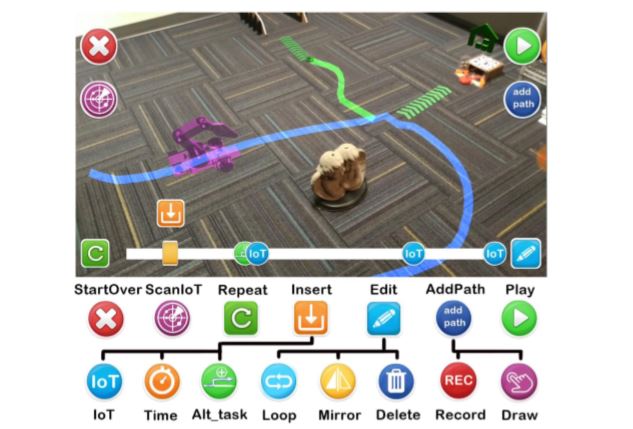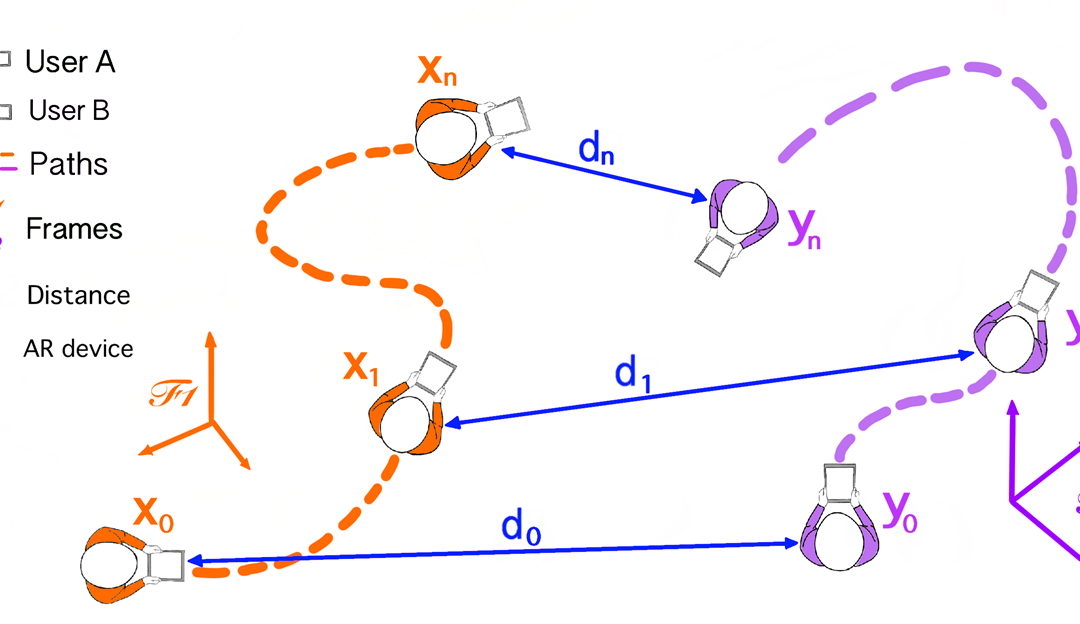Domain users (DUs) with a knowledge base in specialized fields are frequently excluded from authoring virtual reality (VR)-based applications in corresponding fields. This is largely due to the requirement of VR programming expertise needed to...



Freehand gesture is an essential input modality for modern Augmented Reality (AR) user experiences. However, developing AR applications with customized hand interactions remains a challenge for end-users. Therefore, we propose GesturAR, an...

Modern manufacturing processes are in a state of flux, as they adapt to increasing demand for flexible and self-configuring production. This poses challenges for training workers to rapidly master new machine operations and processes, i.e. machine...

There is an increasing trend of Virtual-Reality (VR) applications found in education, entertainment, and industry. Many of them utilize real world tools, environments, and interactions as bases for creation. However, creating such applications is...

Recognition of human behavior plays an important role in context-aware applications. However, it is still a challenge for end-users to build personalized applications that accurately recognize their own activities. Therefore, we present CAPturAR,...

Machine tasks in workshops or factories are often a compound sequence of local, spatial, and body-coordinated human-machine interactions. Prior works have shown the merits of video-based and augmented reality (AR) tutoring systems for local tasks....

We present GhostAR, a time-space editor for authoring and acting Human-Robot-Collaborative (HRC) tasks in-situ. Our system adopts an embodied authoring approach in Augmented Reality (AR), for spatially editing the actions and programming the robots...

We present V.Ra, a visual and spatial programming system for robot-IoT task authoring. In V.Ra, programmable mobile robots serve as binding agents to link the stationary IoTs and perform collaborative tasks. We establish an ecosystem that...

We present V.Ra, a visual and spatial programming system for robot-IoT task authoring. In V.Ra, programmable mobile robots serve as binding agents to link the stationary IoTs and perform collaborative tasks. We establish an ecosystem that...

We present SynchronizAR, an approach to spatially register multiple SLAM devices together without sharing maps or involving external tracking infrastructures. SynchronizAR employs a distance based indirect registration which resolves the...